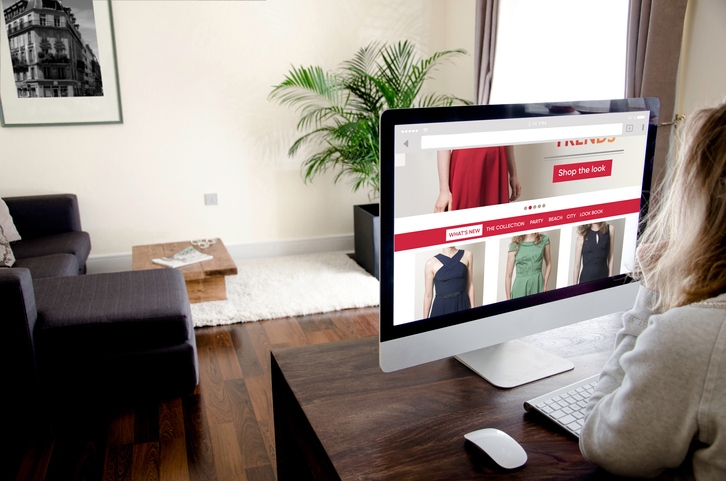We are committed to sharing unbiased reviews. Some of the links on our site are from our partners who compensate us. Read our editorial guidelines and advertising disclosure.
13 Proven Marketing Tips To Attract Customers on a Small Budget
Syndicated from The Penny Hoarder
Small business owners are always looking for ways to save money, and marketing is no exception. How do you stand out from the crowd and tell the world about your amazing business — without spending a fortune?
Don’t let a limited marketing budget hold you back.
There are lots of free and low-budget ways to market your small business, including social media outreach, online ads, content marketing, in-person networking and more.
With the right strategy and tools in place, you can attract potential customers for your company without breaking the bank.
We’ve compiled a list of small business marketing tips and ideas to help get your company noticed before, during and after launch. No marketing agency required.
13 marketing tips for small businesses
Marketing is an essential part of any business. Small businesses, in particular, need to focus on low-cost marketing strategies to help build brand awareness, generate leads and increase sales.
Here are our top 13 marketing tips for small businesses to get you started.
1. Create a logo and brand
If you want to be taken seriously as a business, you’re going to need to look the part. It might be tempting to create a generic logo and use a website template or stock photos when launching, but that isn’t necessarily good in the long run.
“I think many small business owners skimp on this step, and that’s a big mistake because if you don’t look like a real company, customers and clients are not going to trust you,” says Sherry Bonelli, owner of Early Bird Digital Marketing.
Freelance websites such as Fiverr and Upwork connect business owners with graphic designers who can create a custom logo, color palette, business cards and overall design for your business. This can cost anywhere between $300 and $500.
Your website builder might even be able to help. Wix, for example, can help you create a website and design a logo or find a designer to work with. (Wix even has a free business name generator if you haven't settled on a name yet.)
2. Make your website SEO friendly
You need to make it as easy as possible for people to find your business’ website.
Search engine optimization, more commonly known as SEO, is the process of increasing web traffic from search engine results.
SEO plays a crucial role in helping local and small businesses get discovered online.
Several factors determine a website’s search engine ranking, including posting well-written blog pages that establish your topic credibility on a regular basis and using keywords associated with your business.
Here are some other tips to optimize your website:
- Make sure your website is mobile-friendly.
- Use high-quality images and videos to showcase your products and services.
- Keep your website's layout simple and easy to navigate.
- Pick a solid website builder, like Wix, that gives you the framework for SEO while still allowing customization.
There are a lot of free blog posts, courses and resources out there to teach business owners about SEO marketing efforts. To learn more, check out articles on sites such as Moz, Search Engine Land and Search Engine Journal.
You can also sign up for a massive open online course about SEO and follow marketing professionals you admire on LinkedIn.
Data as of 5/3/23. Offers and availability may vary by location and are subject to change.
*With annual billing.
Ecommerce shops and brick-and-mortar stores alike need user-friendly, fast-loading websites to drive business. But you’ve seen plenty of shoddy websites in your time, and you know a clunky website can cause customers to click away from your site and onto a competitor’s in no time flat.
So how do you ensure your website stands out and steers customers to your doors? First, you match with the right small business website builder for your needs. To that end, consider a few things when deciding on a site builder:
- Features. Do you need your website to drive foot traffic, sell products online, or let clients schedule appointments? Whatever you need, make sure the website builder you choose can provide it. (For instance, not all website platforms emphasize ecommerce. If you sell products online, you absolutely need an ecommerce-friendly builder.)
- Price. If your shop makes most of its money online, it’s worth paying a little extra to ensure your customers have the best possible online experience. When choosing a plan, make sure to weigh your budget against the importance of your website to your business.
- Ease of use. Website builders should make your life easier, not harder. Look for a website maker that parallels your level of knowledge about site building—you don’t want to sink hours and days into learning to create a beautiful website. That’s what the builder is for.
If you want to learn a bit more about how to build a site and what to look for in a site builder, check out these articles first:
Ready to launch? Check out these essential things to know before marketing your startup.
3. Create business pages on Google and Yelp
If you’re planning on opening a physical location, such as a restaurant, don’t forget to create a business profile on Google — a free listing service that provides your essential info, such as a street address and phone number. It also allows your business to show up on Google Maps and the local section of Google search results.
A Google business profile also comes with analytics you can use to better understand how customers contact your business.
Creating a business page on Yelp — and monitoring your reviews — is also key. Positive Yelp reviews help you rank higher on Google search results.
You can claim your business page on Google and Yelp for free, add details and upload photos.
4. Promote your business on social media
You can count on using the major social media channels — Facebook, Instagram, Twitter and LinkedIn — to promote business news and engage with your target market.
Depending on your audience, you might decide to integrate TikTok, Snapchat or YouTube into your social media marketing strategy, too.
Keeping an eye on your competitors’ social media platforms also gives you insight on your target audience.
“If a competitor is using Pinterest and it seems like they're gaining a lot of engagement, then Pinterest might be a place you want to go,” said Kim Randall, owner of KiMedia Strategies, a small business marketing firm.
Some additional tips to engage your customers with social media marketing:
- Post consistently.
- Use eye-catching visuals to engage your audience. (Sites like Canva make it easy to create free and low-cost quality graphics.)
- Use hashtags.
- Create social media posts that capitalize on current trends.
- Run polls and request feedback.
- Add your website link to your social media bios.
It’s also important to interact with your audience on social media and respond quickly to direct messages.
5. Find free or low-cost marketing tools
Money may be tight in the early days of your small business, so it helps to use free or low-cost marketing services.
Below is a list of programs and tools that can help stretch your marketing budget.
- Buffer is a social media tool that lets you schedule posts in advance or post the same content to different platforms at once. It has free and paid versions, starting at $6 per month.
- Google Alerts are free and will help you keep up with what people are saying online about your business or keep up with specific keywords.
- AnswerThePublic is a free consumer insight tool that lets you enter a search term, then displays questions people are asking related to that topic. With three free searches a day, the tool generates keyword ideas and so you can see what your potential customers actually want to know.
- Apps such as Grammarly can be useful when writing blogs or content on your website. It can help you write more succinctly and catch grammatical errors.
- Moz Local: Remember those Google and Yelp business listings you created? Moz Local helps you audit your listings on all the major online business directories, including Google, Facebook and Yellowpages. Its Lite version costs $14 a month.
- Wave Video: Adding video content is a great way to engage with customers on your marketing channels. Wave Video is a free online tool that helps you add text, graphics, stickers and other elements to video — all without installing a fancy editing program.
6. Post valuable blog content
When your business is off the ground, think about establishing yourself as a recognized authority in your field.
There’s a reason you started your business, so let people know what you know.
For example, if you’re a photographer, write blog posts on your business website with tips and tricks on how to take better iPhone photos, or suggest “three things to look for in a wedding photographer.”
“When I gave my thoughts, tips and everything else away and became a thought leader, I gained a lot more clients,” Randall says.
Publishing just one blog post a week can help improve your site’s visibility on search engines. It also shows potential customers why they should trust you and your company.
Mix up the type of content you post. How-to guides, top 10 lists, video tutorials, data insights and thought leadership pieces are just a few ideas to get you started.
Make sure to write your content with SEO in mind. Here’s a blog writing SEO checklist from Search Engine Journal. You can also use a WordPress plugin like Yoast.
As your website grows, it’s wise to consider a content management system (CMS) to simplify web development. Here are some of the content management systems small business owners love.
Wordpress isn’t the only game in town. Check out our list of the best blog hosting sites for small business owners.
7. Buy online ads
Google Ads, which appear when you search on Google, is an obvious place to get early quick-wins in your marketing strategy.
According to Google, businesses generally make an average of $2 in revenue for every $1 they spend on Google Ads.
You only pay when someone clicks on your ad, and you can set your budget for ad campaigns, so you won’t overspend.
The downside? Google ads are expensive. To maximize your marketing plan, make sure your ad contains the information users are looking for when they search Google.
For example, if someone is searching for “wedding gown alterations,” the web page your ad sends users to must emphasize that your business specializes in wedding gown alterations.
You can also set a small budget for social media marketing campaigns. Crafting some highly targeted paid ads can lead to impressions and (hopefully) conversions and sales.
8. Leverage user-generated content
Some of the best advertising comes from happy customers. User-generated content is another way to leverage social media for your small business.
To maximize your marketing efforts, encourage existing customers to share photos, videos and testimonials explaining how much they love your product or service.
If you come across these posts organically, ask the creator if you can share and promote the content on your company’s social media pages.
The creator will likely love the mention, and you’ll get to enjoy some free publicity.
Thanking customers for supporting your small business is a win-win for you. You could offer a discount or gift to followers who mention your product or share a social media post.
9. Build an email list
Email is a great way to grow an engaged audience. It’s also a highly effective way to promote your business and keep your customers informed about new products or services.
It’s important to provide content and information your target audience cares about in every email blast you send.
“If you’re mailing out to a random [email subscription] list you didn’t build, that’s where you’re not going to be effective,” Bonelli said. “But if you mail out information that people are interested in, that’s where it’s really effective.”
Make sure to create a sign-up form on your website. You can increase email newsletter sign-ups by offering a coupon or discount code for subscribing.
A weekly or monthly email newsletter is a great start. You can build out more sophisticated marketing campaigns over time.
A free version of MailChimp can help build your email list — it allows you to send up to 12,000 emails a month to up to 2,000 subscribers. The cheapest paid version, which starts at $13 a month, also comes with scheduling and tracking features.
By signing up I agree to the Terms of Use and Privacy Policy.
10. Craft an elevator pitch
Before you start meeting potential customers and attending networking events, do you have your elevator pitch ready?
An elevator pitch is a 30- to 60-second speech that tells the listener who you are, what you do and how your small business will be better than the competition.
With some practice, it can help you land new clients, attract customers and grow your professional network.
11. Attend networking events
Networking can be an invaluable way to find new clients, develop professional relationships and promote your small business.
Sites like Meetup and Eventbrite are great places to find local groups with people who are interested in topics related to your business.
There’s also industry-specific networking events, which can help you connect with potential partners and investors.
Attending trade shows and industry conferences is another smart way to market your small business. They usually feature seminars and workshops to help you hone your skills.
Make sure to bring business cards and other marketing materials to hand out, and be prepared to talk about your business and what makes it unique.
You don’t need to be a social butterfly to thrive at networking events. Here’s how to networking for introverts.
12. Get involved with your chamber of commerce
Getting involved with your local chamber of commerce will help you meet fellow business owners during in-person networking events and other chamber functions.
Josh Rubin, former CEO and owner of Post Modern Marketing, said his chamber helped his company get featured on a local news segment.
Once you start to support other businesses, they’ll do the same when you have a big event or project. Over time, you’ll expand your professional network and be able to utilize their resources.
“All it takes is your time and your energy,” Rubin said.
13. Find a business mentor and continue learning
As a new small business owner or entrepreneur, it’s never a bad idea to seek guidance from people who have been in your shoes.
Score is a volunteer nonprofit organization supported by the U.S. Small Business Administration that connects business owners with mentors from similar fields for free.
The organization provides in-person mentoring at more than 230 local chapters as well as remote mentoring via email, phone and video.
“Everyone always thinks that you have to pay for this kind of business support, and it’s out there for free,” Rubin said.
As you progress and figure out what marketing strategies connect with your target audience, don’t stop learning new things.
Marketing trends are constantly evolving, so knowledge is key. Thankfully, nearly all the tools you need to grow your reach are right at your fingertips.
Rachel Christian is a certified educator in personal finance and a senior writer at The Penny Hoarder. Former staff writer Matt Reinstetle contributed.









